
Coker Cemetery Association, San Antonio, Texas
 |
Coker Cemetery Association, San Antonio, Texas |
 |

|
HISTORY | ||
The Cultural Development of Coker Community, Texasby Jeanette Stanfield |
|||
Chapter I Background [return to top of document] |
|
Sold 19½ lbs. butter @ 25¢....................$4.85 |
Jan. 19, 1861. |
Sold 20½ lbs. butter @ 25¢....................$5.15 |
Mar. 26, 1861. |
Sold 14 lbs. butter @ 25¢........................$3.50 |
|
5 lbs. coffee.......................................... |
$ 1.00 |
40 lbs. salt @ 4¢.......................................... |
$ 1.60 |
peck potatoes.......................................... |
$ 0.25 |
pair blankets.......................................... |
$ 4.00 |
envelope and stamp.......................................... |
$ 0.05 |
candy.......................................... |
$ 0.05 |
bread and sausages.......................................... |
$ 0.10 |
tobacco.......................................... |
$ 0.20 |
Pd. Faidley & Co. on old account.......................................... |
$ 3.00 (9) |
Pd. J. Philips for work.......................................... |
$ 3.60 |
bottle medicine.......................................... |
$ 1.00 |
paper of pins.......................................... |
$ 0.10 |
6 yds. cotton flannel @ 12½ ¢.......................................... |
$ 0.75 |
pair of knitting needles.......................................... |
$ 0.10 |
2½ yds. gingham.......................................... |
$ 0.62 |
1½ yds. domestic.......................................... |
$ 0.15 |
2 bottles Expectorant.......................................... |
$ 2.00 |
box pills.......................................... |
$ 0.25 |
set cups & saucers.......................................... |
$ 0.50 |
dinner.......................................... |
$ 0.25 |
1½ yds. calico.......................................... |
$ 0.18¾ |
50 lbs. flour.......................................... |
$ 3.25 |
spool thread.......................................... |
$ 0.05 |
flat iron.......................................... |
$ 0.81 |
bucket.......................................... |
$ 0.45 |
bottle whiskey.......................................... |
$ 0.40 |
pocket knife.......................................... |
$ 0.35 |
2 lbs. coffee.......................................... |
$ 0.60 |
bushel meal.......................................... |
$ 1.60 |
shoes.......................................... |
$ 1.00 |
hired hand, one month.......................................... |
$12.00 |
sardines.......................................... |
$ 0.15 |
set of plates.......................................... |
$ 0.75 |
candles.......................................... |
$ 2.00 |
hired negro, 2 months.......................................... |
$24.00 |
ax handle.......................................... |
$ 0.35 (10) |
Disease and animal bites in this territory were just as common in 1861 as they are now. Since the people had to be their own doctors most of the time, it is interesting to note this remedy for snake-bite as found in J. Harrison Coker's diary: |
Iodide of Potassium grs.......................................... |
4 grains |
Corrosive Sublimate grs.......................................... |
2 grains |
Bromine Drachms.......................................... |
5 drachms |
|
June 16, 1861 |
Schooling |
$12.40 |
October 9, 1861 |
Paid my part on stove for school house |
$ 1.00 |
December 14, 1861 |
Paid balance on schooling |
$ 3.40 |
One spelling book |
$ 0.15 |
|
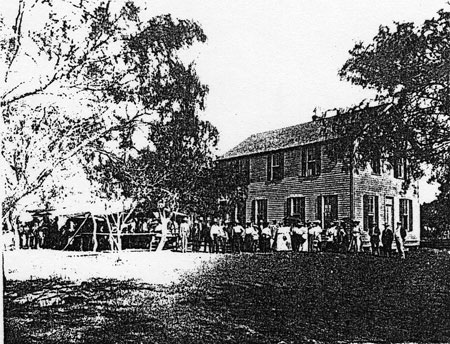 The two-story frame building was erected about 1904 or 1905 |
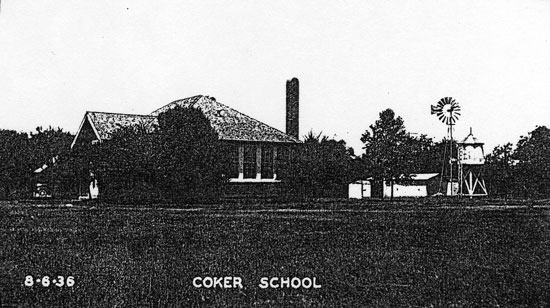 Brick and hollow tile school building constructed in 1925. |
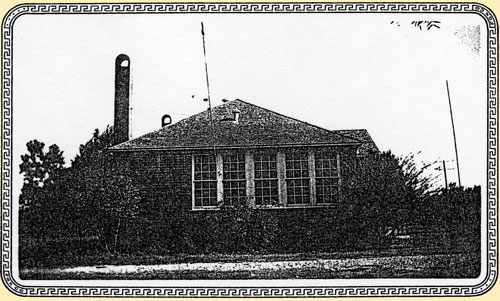 Another view of the two-room brick school building |
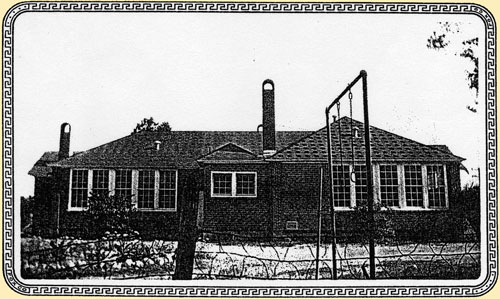 Present school building showing addition made in 1936. |
Chapter III Development of Coker Community Church [return to top of document] |
||
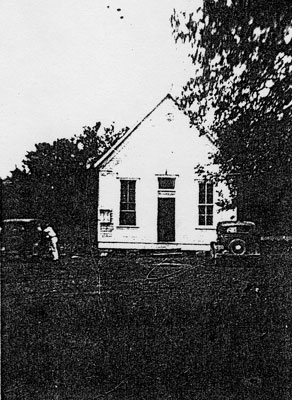 Frame church built in 1885 and torn down in March, 1939. |
The first wedding in the church was a double ceremony with Agnes Autrey and Thomas C. Marmon as one couple and Maggie Autrey and Fred Tomasini as the other couple. The two brides were sisters. An amusing incident occurred in that the grooms wore the same suit. While one couple was being married, the other waited outside the building. Then the second groom changed his clothes, and he and his bride were joined in wedlock (30). Leona Marmon and Clarence Vaughn were the last couple to be married in this church. The bride is a daugher of Mr. and Mrs. Thomas C. Marmon, one of the first couples. The last funeral to be held from the old church was that of Fred Tomasini, one of the first bridegrooms (31). |
|
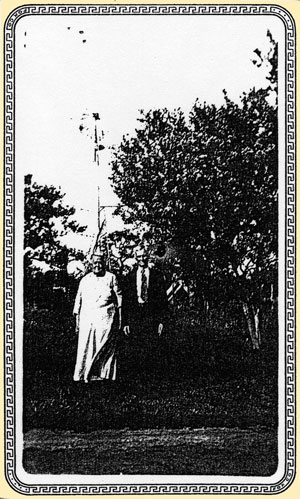 Reverend and Mrs. A.E. Rector. |
After Rector had left this congregation, he was invited back to perform a wedding. As a fee the groom gave him five dollars and a pig. The latter Rector put in the back of his buggy. On his way to town Rector met the regular pastor of the Coker congregation. They stopped to chat and while doing so the pig let out a squeal. The preacher laughed at the idea of being given a pig for a fee, but when Rector showed him the five-dollar bill, the preacher's mirth changed to scorn (32). |
Oct. 9, 1861 |
Paid my part on stove for schoolhouse (same building for church and school) |
$ 1.00 |
Paid to preacher |
$ 5.00 |
|
Oct. 30, 1861 |
Gave to missionary |
$ 1.00 |
Cash paid to preacher |
$ 1.00 (33) |
|
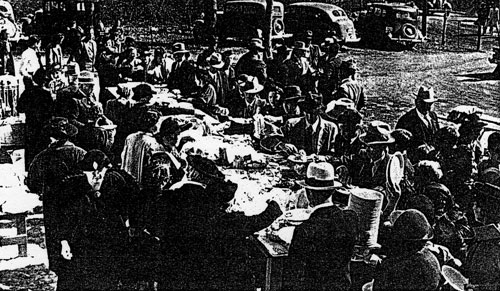 Dinner on church grounds, Easter, 1939 |
Those who served the church when it was known as the Salado Methodist Episcopal Church, South, include: |
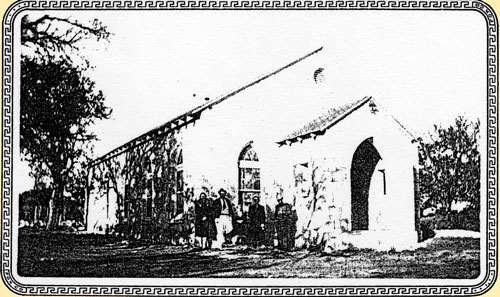 New rock church completed in 1939. |
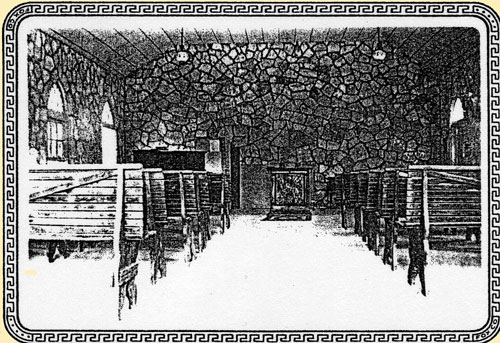 Interior of the new rock church. |
BIBLIOGRAPHY [return to top of document] |